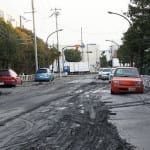BOSTON, July 1, 2013 – Catastrophe modeling firm AIR Worldwide today announced that it has updated its Earthquake Model for Japan to include insights gained from the Great Tohoku earthquake of March 2011, which yielded a vast amount of ground motion data, damage observations, and detailed claims data. As a result, the AIR model represents the industry’s first and currently only comprehensive view of seismic risk in Japan post-Tohoku. In addition to capturing the complex seismicity of Japan and the changes that took place as a result of the Tohoku…
Read MoreTag: Japan tsunami costs
Cat bonds still steady even with major disasters
After the devastation in Japan two months ago, investors were keeping a watchful eye on the stock and bond market. It appears though, that the catastrophe bond (CAT bonds) division has been holding strong. Analysts and brokers have commented that no drastic price decreases or large spreads have occurred to cause them to be worried. The recent earthquake and tsunami in Japan were what investors are calling the biggest adversity to happen since the financial woes of the Lehman Brothers filing for bankruptcy. The catastrophe bond sector is still strong…
Read MoreJapan Catastrophe 2011: The Wake Up Call
After seeing the devastation from last month’s earthquake and tsunami in Northeast Japan, officials in Tokyo are re- evaluating their current disaster plan. The huge 9.0 quake on March 11th that occurred over 200 miles from Japans capital made them realize they weren’t prepared for the worst-case situation. Japan has been working for over 40 years to make their country safer from devastating earthquakes. Earthquake engineering is a normal part of the construction process in Japan. City leaders were confident they had prepared for worse-case scenarios; until the quake…
Read MoreReinsurance company reports market strength despite major disasters
Willis Re, the reinsurance division of Willis Group Holdings (NYSE: WSH), has released their stimulating report “Shaken and Stirring”. Stirring is an understatement. The report shows that with the devastation in Japan, New Zealand, Chile and the Australian floods is still not enough to bring a hard market into play. The report finds that there has been rate increases on Natural Catastrophe Excess of Loss of between 5 and 50 %, but the recent massive earthquakes in Japan and New Zealand’s South Island are not significant to push market-wide pricing up.…
Read More

